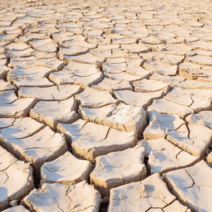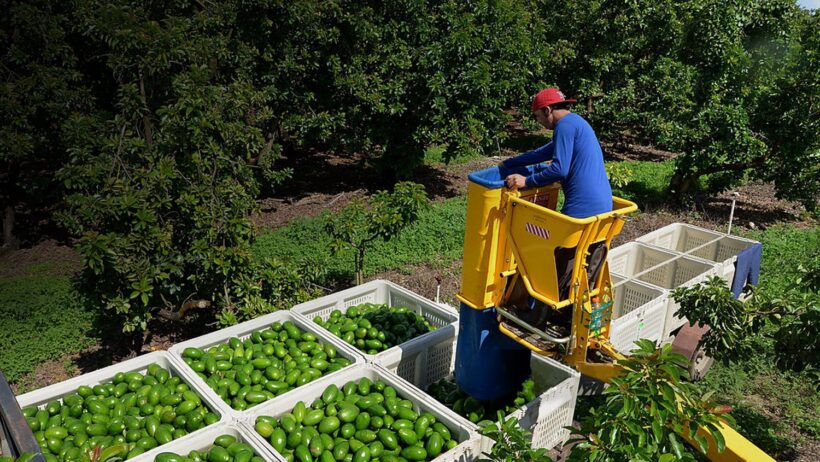Avocados, often referred to as the green gold of the culinary world, flourish in specific climates that mimic their native tropical and subtropical habitats. This creamy fruit’s success hinges upon a confluence of environmental factors that coalesce to create the optimal conditions for growth. From the sun-drenched slopes of California to the warm embrace of Mexico, avocados have established a unique ecological niche where they thrive.
The avocado tree, scientifically known as Persea americana, prefers climates characterized by warm temperatures, well-drained soil, and a temperate range of humidity. Its roots are deeply entwined with the climatic tapestry of its growing environment, demanding the right balance of heat, light, and moisture to produce the luscious, buttery texture that has garnered global adoration. Without these elements in harmony, the creamy success of the avocado is jeopardized.
Primarily indigenous to the mountainous regions of Central Mexico, the avocado tree revels in a range of temperatures that ideally oscillate between 60°F (15°C) and 85°F (29°C). This temperature range, akin to a comfortable blanket, offers a sanctuary for the plant, allowing it to flourish. Conversely, temperatures plummeting below 30°F (-1°C) can be perilous, as frost can decimate young trees and impede fruit production. The avocado’s temperamental nature necessitates vigilance from cultivators, who must ensure the trees are shielded from the vagaries of climatic extremes.
Another critical factor influencing avocado cultivation is the presence of sunlight. Avocado trees are sun-worshippers and require ample exposure to daylight, benefiting from at least six hours of direct sunlight daily. This exposure catalyzes photosynthesis, the very process that transforms sunlight into the energy essential for robust growth and fruitful yields. Those lucky enough to reside in areas graced by long hours of sunshine, such as the sun-kissed coasts of California and the warm valleys of Chile, find themselves in a veritable avocado paradise.
Equally important to the success of avocados is the interplay of moisture and drainage. While these trees are hardy, they loathe saturated soil, which can suffocate their roots and invite a host of fungal maladies. Surprisingly, the mature avocado can tolerate short periods of drought. However, consistent and moderate rainfall, ideally between 30 to 40 inches annually, ensures lush foliage and vibrant fruit. Arguably, this makes irrigation an art form in itself. Growers often employ drip irrigation systems, delicately balancing moisture levels while minimizing water wastage. This precision not only supports sustainable agriculture but also aligns with environmental stewardship, a philosophy that resonates in modern farming practices.
Soil quality cannot be overlooked when discussing the avocado’s delicate dance with its environment. Well-aerated, loamy soil, enriched with organic matter, serves as the ideal canvas for avocado cultivation. The pH level of the soil should ideally hover around 6 to 7, which strikes a harmonious balance that promotes nutrient absorption. Farmers often engage in soil amendment strategies to enhance fertility, incorporating compost, mulch, and other organic materials. Such practices not only bolster avocado production but also contribute positively to the ecosystem by enhancing soil health and biodiversity.
The unique appeal of avocados extends beyond their climatic preferences; their versatility is emblematic of their rising prominence in global cuisine. Once relegated to a niche status within the culinary realm, avocados have transcended their humble beginnings to become a social symbol of health, fitness, and sustainability. This transformation reflects a growing awareness of their nutritional benefits and the environmental practices surrounding their cultivation.
Additionally, avocados are increasingly recognized for their climatic resilience, adapting to the changing environmental landscape. As temperatures rise due to climate change, growers are experimenting with avocado varieties that can withstand new climatic challenges. This forward-thinking approach illustrates the intersection of agriculture and climate science, showing the agricultural community’s adaptability in the face of adversity.
Despite the challenges posed by climate change, local and global initiatives are burgeoning that aim to protect avocado-growing regions from environmental threats. Community-driven conservation efforts focus on sustainable agricultural practices, water conservation, and reforestation projects to preserve the ecosystems that nurture avocado trees. Such initiatives not only protect avocado farms but also contribute to combating broader environmental issues, showcasing the interconnectedness of food production and climate stability.
Ultimately, the world of avocados is a testament to nature’s intricate design. Each creamy fruit houses the essence of its environment—a blend of warmth, sunlight, and nutrient-rich earth. The narrative of the avocado is not merely one of agricultural success; it is a story woven into the fabric of environmental sustainability. As the popularity of avocados surges, it is imperative to embrace practices that honor the delicate equilibrium of their climatic needs, ensuring that future generations can savor the splendor of these emerald treasures.
In conclusion, avocados thrive in a carefully orchestrated symphony of climate conditions. Favoring temperate zones with ample sunlight, moisture control, and well-draining soils, these trees require a thoughtful approach to sustainable agriculture. The cultivation of avocados illuminates the relationship between climate and agriculture, urging a collective responsibility to protect our planet while indulging in the creamy successes that avocados offer. Their journey from tree to table reflects not only labor and environmental stewardship but a deeper commitment to the well-being of our world.







